The course reviews the basic concepts, terminology, and notation involved in geometry, and is designed for the student who successfully completed Algebra 1 as a freshman, though any student may apply. Both abstract and practical aspects are covered. Conditional statements, conjectures, theorems, and written justifications are systematically brought into the course, along with the subjects to which they pertain, in the context of problem solving as well as in the context of the preparation of formal proofs. Students construct an understanding by spending some of their class time working in collaborative learning groups. Review of algebraic and geometric concepts is employed throughout the course. In this way, algebra skills are maintained and the students are better prepared to enter into the geometric aspects of advanced algebra, math analysis, precalculus, and calculus courses. A Texas Instruments TI-83 or TI-84 series graphing calculator is required.
Geometry Accelerated
This course follows generally the description of the traditional geometry course but also includes more proof (direct and indirect; in two-column, flow, and paragraph form). This course is designed for the student who successfully completed Algebra 1Acc as a freshman, but any student may apply. Within the context of Geometry, the Accelerated course includes more challenging algebraic applications, such as solving quadratic equations. It also includes an introduction to analytic geometry and trigonometry, helping to prepare students for Precalculus. A Texas Instruments TI-83 or TI-84 series graphing calculator is required.
Geometry Honors
This course follows generally the description of the traditional geometry course but provides extensive experience from early stages with the devising, presentation, and defense of student proofs and the theoretical consideration of the nature of proof (direct and indirect; in two-column, flow, and analytical paragraph form). The Honors course includes a more extensive coverage of solid geometry, an introduction to analytic geometry and trigonometry, and opportunities for curricular enrichment in problem-solving. Additional topics include vectors, trigonometric identities, conic sections, and the study of trigonometric and circular functions. Within the context of Geometry, the Honors course includes more challenging algebraic applications, such as solving quadratic, rational, irrational, logarithmic, and exponential equations. This course is designed for the student who successfully completed Algebra 2H as a freshman, but any student may apply. A Texas Instruments TI-83 or TI-84 series graphing calculator is required.
*Class receives honors weighting in SI weighted GPA
Algebra 2
The first part of the course reviews basic terminology, notation, concepts, skills, and application of elementary algebra by examination of the real number system. This part includes real number concepts and skills involving operations with positive and negative numbers and zero, solution of linear equations and inequalities, one and two variable equations, solving verbal problems, properties of polynomials and rational expressions. Ideas such as set, variable, number line, open sentence, ordered pair, equivalent sentences, and Cartesian coordinate system are studied and the student is required to demonstrate ability to solve problems involving these concepts.
The course also includes the concepts of function and relation and emphasizes linear and quadratic relations and functions. The text chapters discussing this material employ symbols, concepts, and methods presented in the earlier chapters. Thus, the course continually grows and builds on learned material. The course also includes discussions on exponential functions and logarithms, and a short look at trigonometry. A Texas Instruments TI-83 or TI-84 series graphing calculator is required.
Wellness 9: General Physical Education/Wellness
In the spirit of Cura Personalis, this dynamic Wellness course addresses multiple facets of wellness, including: physical, mental, social, spiritual, and sexual. A complete program where students will be required to move their bodies and engage in concepts associated with healthy living. Running through the entire course is a focus on mindfulness, including the establishment of a meditation practice. Students will begin building their physical and wellness footprints while learning essential concepts in the areas of fitness, nutrition, social, and mental health. A sound body and a sound mind are essential to healthy living.
Introduction to Ethnic Studies
Introduction to Ethnic Studies challenges students to frame their individual identity, their family history, and their community history through the lenses of race, ethnicity, gender, nationality and culture. Students will examine case studies that identify problems and analyze causes of systemic inequality through historical and contemporary contexts. This course will also focus on developing reading, writing, notetaking and dialogue skills necessary to create and present well-organized arguments. The semester-ending project will focus on the history and the work of a social movement. By the end of this course, students should have an understanding of what it means to live responsibly and ethically as men and women with and for others.
Modern World History
Study of the cultural, political, geopolitical, economic, and religious factors involved in global events from the Age of Exploration and Conquest to the present day. Mastery of basic historical content, the ability to analyze and interpret both primary and secondary source materials, note-taking and research skills will be developed. Writing skills for the Social Sciences, including the development of a formal thesis, the defense of that thesis through in-class writing and a formal research paper, and identifying historical significance are a major focus. Students will also be able to trace the roots of global inequality and consider the major world events of the 20th century that continue to form our modern world.

